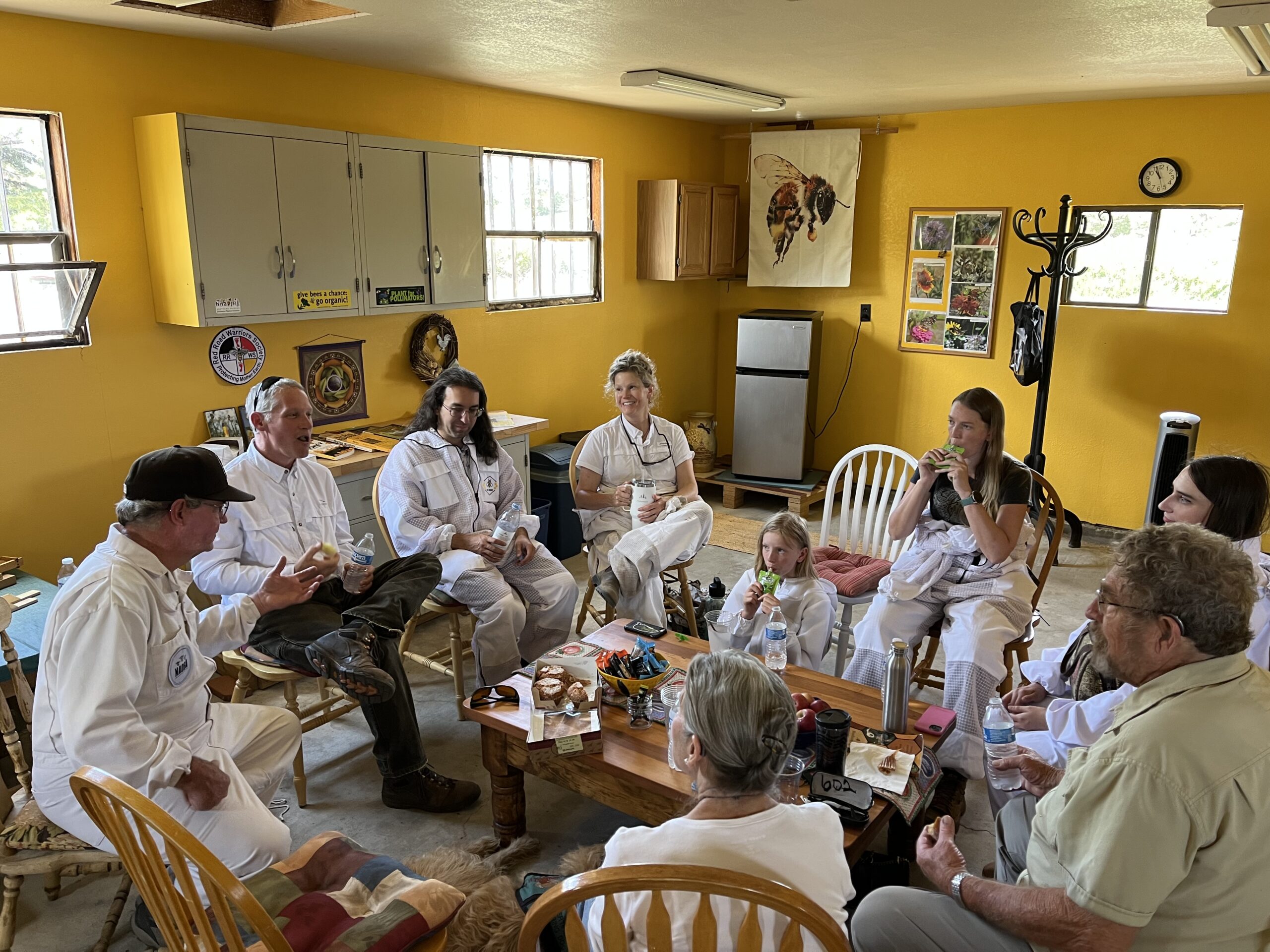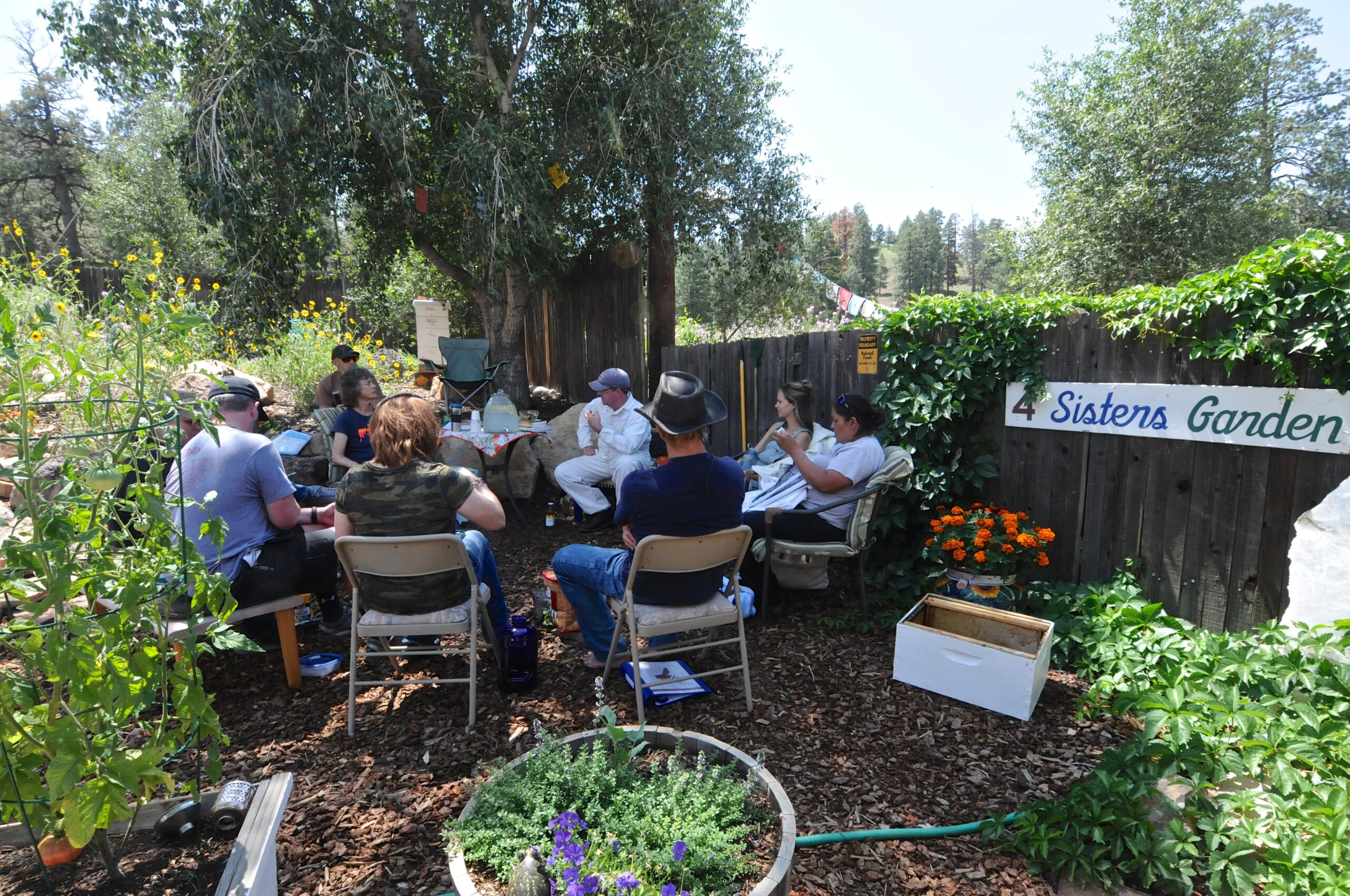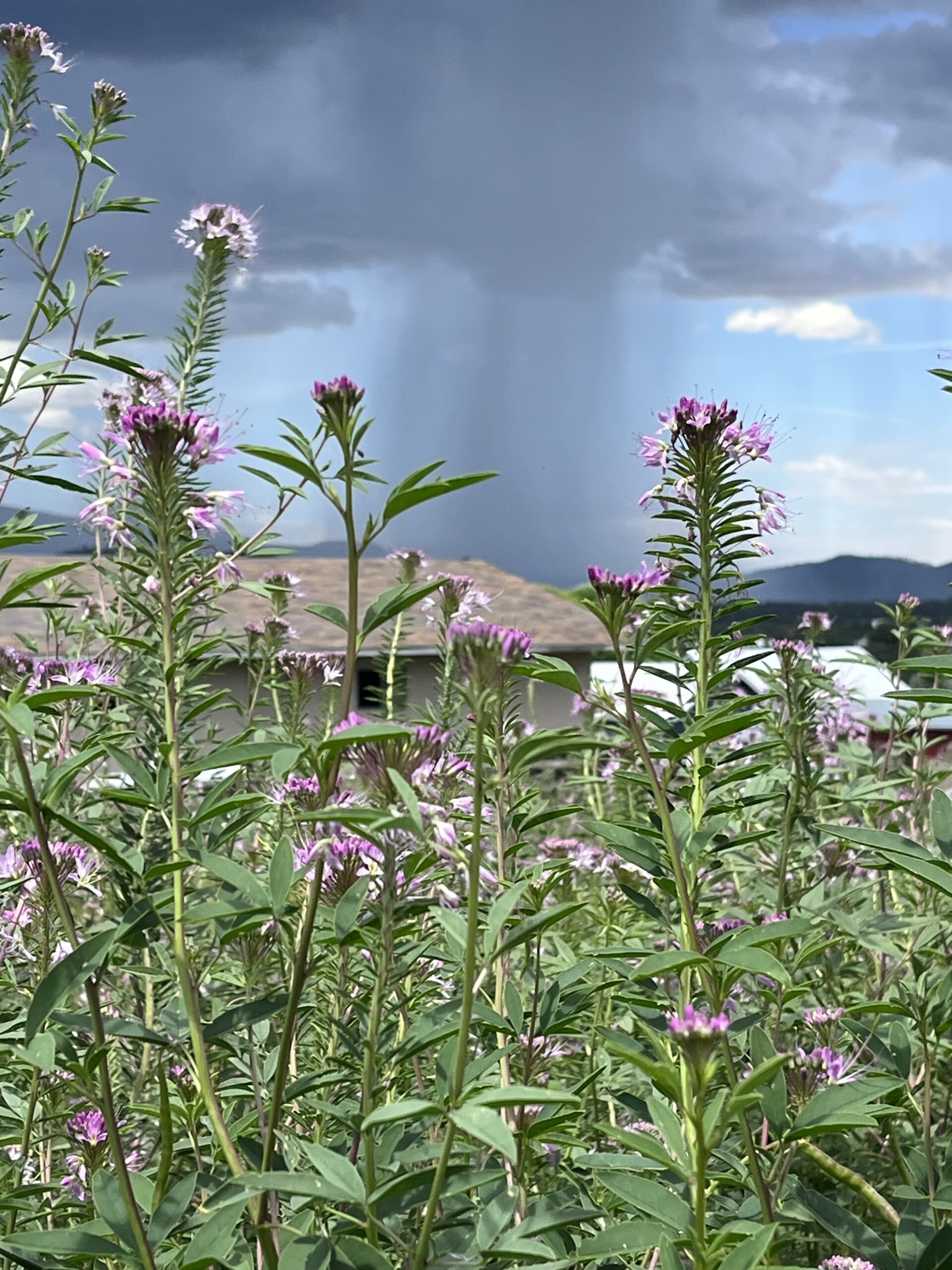Where We Are
In the organic/holistic/biodynamic approach to beekeeping, location, or place, is “everything.” For example, honeybee colonies usually do best when their entrances are facing south or east, and when they are living in local foodsheds that provide them with plenty of water, propolis, (resin from specific trees), pollen, and nectar.
Since the year 2001, I have been keeping bees in arid and semi-arid Northern Arizona. This includes relatively hotter and drier lower elevation places like Camp Verde, Cornville, and Cottonwood, below 4,000 ft.; middle elevation places like Winslow, Prescott, and Sedona, above 4,000 ft.; and the relatively cooler and wetter higher elevations, like upper Oak Creek Canyon, Flagstaff, and Williams, above 6,000 ft.


I am very much in love with the biocultural diversity of this part of Northern Arizona, from the Verde River in the south, climbing northward across the Mogollon Rim onto the southern edge of the Colorado Plateau. The Flagstaff area is situated within a vast volcanic field. This part of the Earth’s surface includes more than 600 volcanic features, including cinder cones, lava flows, lava domes, and the sacred San Francisco Mountain, which is better known as “The Peaks.”
Our home and main apiary are located in the middle of this vast basaltic volcanic field with areas of black or red volcanic cinders and pure black cinder sand. In the late summer rainy season the land is covered with the abundant yellow flowers of chamisa shrubs and sunflowers, and blanketed with purple Rocky Mountain beeplant. In autumn, the slopes of the nearby San Francisco Mountain are streaked with golden aspen groves. There are high desert prairie grasslands and colored hues of green from the surrounding ponderosa pine forest and pinyon-juniper woodlands of the Coconino National Forest.
We call our home and land “The COB,” or Center for Organic Beekeeping. This acronym also makes reference to 4M: Selu, or Grandmother Maize, one of the three sacred sisters of traditional American Indian agroecology. Our place sits near the mouth of a small and unnamed volcanic cinder cone that hides a pit house and pottery shards from the Indigenous peoples who once lived here in the high country and who also hunted the Plateau’s antelope, deer, and elk. This region was their home. They belonged to this land. To this day, the Hopi, Navajo and Havasupai peoples along with many other Southwestern tribes know that the San Francisco Peaks are sacred. The Hopi People in particular view the San Francisco Mountain as a central part of their culture and spiritual worldview.

The often snow-capped San Francisco Peaks (the four main ones being Humphreys, Agassiz, Fremont and Doyle), are declared by the USGS to be the remnants of a stratovolcano (today’s San Francisco Mountain), which is now dormant but situated in the geologically active San Francisco volcanic field that is located in and around Flagstaff. The volcano rises to 12,633 feet above sea level at Humphrey’s Peak to our west. The sunrises and sunsets on the Peaks are often mind-blowingly beautiful.
Sunset Crater, a basaltic cinder cone to the north of us rising to 8,042 feet, erupted around 1075 A.D., and was one of the training places for the astronauts who were preparing for the Apollo missions to the moon during the 1960s. To the northwest of Sunset Crater rising to 8,919 feet is O’Leary Peak, an extinct Pleistocene lava dome volcano, used today as a fire lookout. To our southwest is the city of Flagstaff along with Mount Elden, rising to 9,301 feet in elevation. It is a dormant lava dome that has its own relatively warm local microclimate: here one finds Flagstaff’s so-called “banana (yucca) belt.” Mount Elden’s microclimate is created by its eastern and southern slopes, and by the dacitic lava flows that emerged from its many vents. Dacite holds the heat from the intense sunlight of the Southern Colorado Plateau.

Everyone who looks and walks upon this land is reminded of the fact that “the Earth is alive and possessed of spirit.” –N. Scott Momaday (Kiowa Nation/Cherokee Descendant)